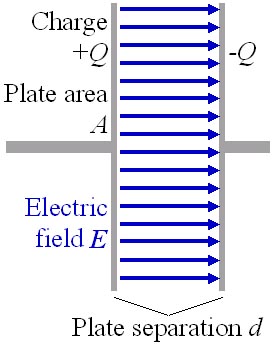Capacitors

http://en.wikipedia.org/wiki/
Image:Dielectric.png
Basically, capacitors are a circuit component that stores electric charge. Another way of putting it is that capacitors store
energy in an electric field created by two different conducting surfaces charged with equal but opposite charges.
Positive charges collect on
one surface and negative charges collect on a second surface nearby, but a key point is, the charges are on electrically separate surfaces.
Typical capacitors consist of two plates that act as the conducting surfaces. These plates are called
electrodes. The plates are separated by an insulator or dielectric, which help create a high capacitance in the capacitor due to the polarization
of the molecules in the material. One way ultracapacitors differ from capacitors is that they are not separated by an insulator or a dielectric
in the same sense as a typical capacitor, which will
be discussed in more detail later. Since
the plates of a capacitor are conductors, the charge is stored on the surface of the plates, and since each plate is charged with an equal but
opposite charge, the net charge on a capacitor is zero. The property of a capacitor that allows it to hold charge is called capacitance.
Capacitance

http://en.wikipedia.org/wiki/
Image:Capacitor.png
Capacitance is the property that allows a capacitor to store charge. Capacitance (C) is a ratio of the magnitude of the charge (Q)
on the conductors
to the magnitude of the voltage (V) between the conductors:
C = Q/V
Capacitance is measured in Farads (F). Farads are coulombs per volt. So, one Farad is when one coulomb causes a potential difference of
one volt across the plates. Capacitance is proportional to the surface area of the conducting plates (or proportional to the size of the
electric field) and
inversely proportional to the gap between the plates. It is also proportional to the type of insulator or dielectric used. Therefore, the
closer the plates are to each other without touching, the greater the capacitance. In addition, the greater the surface area of the conducting
plates, the greater the capacitance. These are both features that are taken into consideration when making ultracapacitors.

